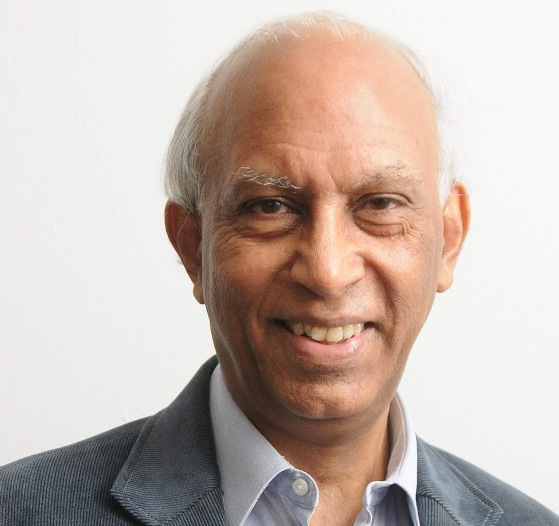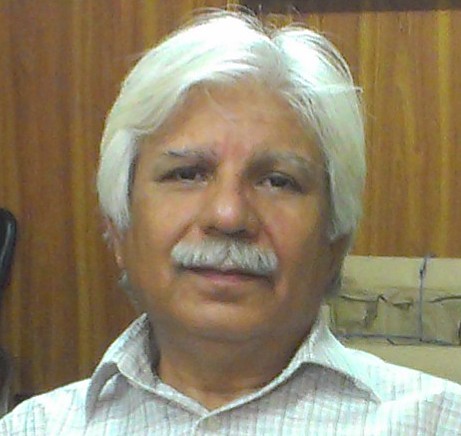
Western Europe : International Migration, Part II
(Dr Ishtiaq Ahmed)
Professor Emeritus, Stockholm University
Continuing with the chief characteristics of international migration which in the previous article looked at migration since the 15th Century – largely undertaken by Europeans with the help of superior arms and technology – we now focus on post-Second World War Western Europe from where the European empires once embarked on the colonial adventure.
The Second World War left in tatters not only the defeated Axis Powers, Germany, Italy and Japan, but also the victorious Allied Powers such as Great Britain, France and the Soviet Union. Altogether 45-50 million deaths took place in the Europe theatre of war (western, central and eastern) including land and sea.
The main aggressors Germany and Austria together lost nearly 8 million, and the other country which bore the brunt of the aggression was the Soviet Union, which lost 27 million lives. Jewish lives lost in the Holocaust are estimated between 3-6 million. The other ethnic minority which suffered most was the Roma (earlier called Gypsies).
The end of that terrible war left Europe bleeding, its industries smashed, the economies rendered insolvent and on top of it all, instead of the Allies becoming partners in peace they polarized under the leadership of the former USSR and the USA into two hostile ideological and military blocs. Germany was split into East and West Germany.
In this new dispensation, Western Europe now included West Germany and Austria and all other nations west of it. In Western Europe, the countries which suffered most deaths were France 600,000, Italy 492,000, UK 450,900 and the Netherlands 210,000. Smaller states such as Belgium, Austria, Norway and Denmark also suffered fatalities. Figures for Spain and Portugal are not available, as their governments were allied to Germany, but some of their nationals fought for the Allied powers as well.
While the Soviet Union and its allies sealed their borders, thus separating much of central and all eastern Europe from western Europe and thus prevented the free movement of people, in western Europe the need for importing greater workforce to revive the economy was felt acutely.
The UK and France which were intercontinental empires let young men from the colonies to immigrate and seek work. In the past, very few people from the colonies could settle in the metropolitan countries. Before the war princes, upper class students and some working-class people had settled in the UK and France, but now they began to arrive in large numbers seeking work.
Conditions were appalling for them. Partly this derived from the wholesale destruction of the cities and towns and the poor housing conditions, but also the racist ideas about non-White people coming in large numbers. Till the early 1960s, the standard practice in London was that landlords would advertise ‘Blacks and Browns need not apply.’
Only Irish and Jewish house owners were willing to rent out rooms to Africans and Asians. Things elsewhere in Europe were no better, though France had a more assimilationist approach to the incoming workers.
The turning point came in the UK in 1964 when a Labour Government headed by Prime Minister Harold Wilson came to power. He forbade racial renting advertisements. At the same time, unrestricted immigration from the colonies began to be regulated and an employment offer was made obligatory to let people come and settle.
West Germany adopted an active policy of importing foreign workers. I have heard that both India and Pakistan were considered for importing workers, but the Nehru and Ayub governments overruled the proposal. Anyhow, Germany began to import workers from southern Europe – Italians, Yugoslavs, Turkey and Greece. Sweden followed suit.
Historically, British policy during its colonial period in Asia and Africa had been to keep the natives separate from the British ruling class so that there was very little integration of the British with local society. On the other hand, France adopted the opposite policy of assimilating the natives into a vague idea of Greater France.
Germany had not had any major empire in either Asia or Africa but in European politics it followed the policy of ethnic descent as the basis for inclusion into the German nation. The same policies roughly defined their attitude towards non-White immigrants.
By the late 1960s several million Asians, Africans and Caribbeans had arrived. Except for Sweden where the policy was to encourage the foreign workers to set up permanent home, elsewhere the policy on non-White immigration was ambiguous to say the least. The UK let the immigrants establish their separate cultural presence; France preferred the immigrants to assimilate, while Germany preferred segregation.
The attitudes of the immigrants varied too. By the 1970s, the men who had arrived in the 1950s and 1960s had established families, which were nearly always in the form of spouses from their original homelands. That meant that they now had to look for cultural expression connecting them to their homeland cultures.
Among the immigrants a very large number were Muslims. In the UK, besides Muslims, Hindus and Sikhs also were settled in large numbers.
In the mid-1970s, the first signs of Muslim isolationism began to be expressed. The Imam of the main mosque in London appealed to the British Government to allow Islamic law, Shariah, to be applied to the internal affairs of the Muslim community. It was argued that Sharia law was like British law. This was not correct.
Neither the laws on marriage and divorce nor on inheritance were similar. On the contrary, there was a clear pro-male bias in the Sharia laws. Similar demands began to be heard elsewhere among Muslims in western Europe. The Hindus and Sikhs were less active in such demands, but among them too an in-ward approach closing themselves from mainstream society began to emerge.
Second to none, the Sikhs demanded the right not to wear the helmet instead of their turban on motorbikes claiming that if they could survive the two world wars fighting wearing turbans they could survive an accident the same way!
Such developments only provided grist to the mills of the anti-immigrant parties which now became loud and vociferous especially in the UK demanding a ban on immigration and even sending the coloured immigrants back to their countries of origin.
However, ironically, the liberal-democratic countries one after the other began to make naturalized citizenship easy and non-White immigrants began to acquire the citizenship of the countries they had settled in and later through the European Union also the right to travel and settle in all the member states.
The European Union adopted progressive policies on immigration and granting of citizenship and all member states had to change their policies. Even Germany began to grant citizenship to what were known as Guest Workers, though still on a restrictive basis.
The course of history took another turn, however. The Iranian Revolution of 1979 profoundly influenced Muslim politics in particular and world politics in general. The Islamic state as an alternative to modern, liberal-democratic society began to attract attention among Muslims. Such trends were compounded by the so-called Afghan jihad of the 1980s.
Pakistan had already gone through right-wing radicalization with General Zia-ul-Haq’s military coup of 1977. Saudi Arabia, fearful of the Iranians posing a threat to their self-styled leadership of the Muslims began to promote Sunni extremism.
Iranian-Saudi competition for leadership impacted worldwide. Sectarianism was the hallmark of the Iranian revolution even when tactically the Ayatollahs claimed to represent all Muslims.
On the other hand, in alliance with the Americans and to some extent the Chinese the Afghan jihad became the basis of a global mujahideen movement with visible Sunni overtones. The CIA and pro-Saudi ulema began to recruit young Muslim men in the West for jihad in Afghanistan. Iran focused on promoting a Shia revival all over the world. These trends naturally impacted on the Muslim immigrants in western Europe.
As already argued in an earlier article, diaspora communities had consolidated during this period and in some cases had been the basis of separatist and secessionist attempts back home. The Khalistan movement, the Tamil Tigers of Sri Lanka and the large Kashmiri Muslim diaspora in the UK were some such movements. Kurdish separatism gained followers in Germany, Sweden and elsewhere.
At the same time, the Israeli invasion of the Lebanon in the 1980s meant thousands of Arabs fleeing to western Europe. Already an Iranian immigrant community had settled in western Europe but these were mostly well-to-do and educated people who ran away from Khomeini’s Islamism.
The 1991 war on Iraq resulted in further inflow of immigrants. The Muslim presence in western Europe now swelled to more than 10 million. Iranian, Saudi and even Iraqi funding to mosques and Islamic cultural institutions resulted in Islamist isolationism from the mainstream society in western Europe. In France, UK, the Netherlands, Belgium and Germany anti-immigration parties began to ring alarm bells.
Things came to a head after Al-Qaeda masterminded the 9/11 2001 terrorist attacks in the United States. It resulted in the invasion of Afghanistan by the Americans and their NATO allies. This was followed by the invasion by the Bush-Blair coalition on Iraq. Another wave of immigrants headed towards western Europe.
Meanwhile, from Africa a stream of immigrants running away from poverty began to arrive in boats mainly on the Italian coast but also to other places. Western policies ostensibly meant to bring democracy to the Middle East continued and Libya was attacked and the regime of Col. Qaddafi brutally brought to an end. Qaddafi had only lately given up his support to terrorism and relations with Britain, France US were improving but then came this attack on him.
The overthrow of Saddam Hussain brought the Shiites into power in Iraq. Iranian ambitions to carve out for itself a leading role in the Middle East through Hezbollah in Lebanon and a patronage of Hamas to appear to be the true friend of the Palestinians now received a great boost with Iraq now under the majority population of that country. All such trends meant sectarian violence and more outflows of refugees to western Europe.
The so-called Arab Spring finally resulted in the uprising of the Sunni majority against the Bashar al-Assad regime in Syria. The bloody civil war which erupted meant Iran and Saudi Arabia and its allies backing opposite sides in the conflict. ISIS or Daesh appeared on the scene with the most brutal and most primitive type of Islamist terrorism.
Although conspiracy theories originating in Iran tried to portray these new Warriors of God as agents of the CIA and Mossad, the evidence suggests that these were mostly soldiers of Saddam’s army who had been thrown out of work and left in the lurch. It is perfectly possible that the Americans may have extended some help to them and Saudi Arabia also backing them, but their ideology proved to be so patently evil that such backers backed out.
The Syrian regime with the assistance of Iran and Russia gained the upper hand and carried out massive bombardment of the strongholds of the opposition including ISIS. More than a million Syrian refugees arrived in Western Europe – Eastern European states refusing to accept Muslim refugees.
Already in the aftermath of 9/11 2001 and especially after the invasion of Iraq in 2003, radicalized Muslims carried out terrorist attacks in western Europe. As more societies were bombed and destroyed in the Middle East and North Africa greater numbers of immigrants headed towards western Europe. Among them some were influenced by militant Islam which had been nurtured in the mosques and run-down Muslim ghettos in western Europe. No policy had been adopted to integrate these communities.
The appearance of hijab and niqaab or burqa among Muslim women was seen as a provocation in France. It banned the burqa while making hijab conditional to girls attaining adulthood. Some further aggravations followed. The publication of the cartoons of the Prophet Muhammed (PBUH) greatly incensed some Muslims. Attempts on the lives of those who published them resulted in deaths in some places.
Both sides lived in sublime ignorance about one another. Apprehensions about a Muslim takeover of Western Europe began to be advanced in different forms by the anti-immigrant parties which were now clearly anti-Muslim parties. Their electoral support increased significantly though the governments remained committed to the liberal-democratic model with inclusive citizenship as their policy.




